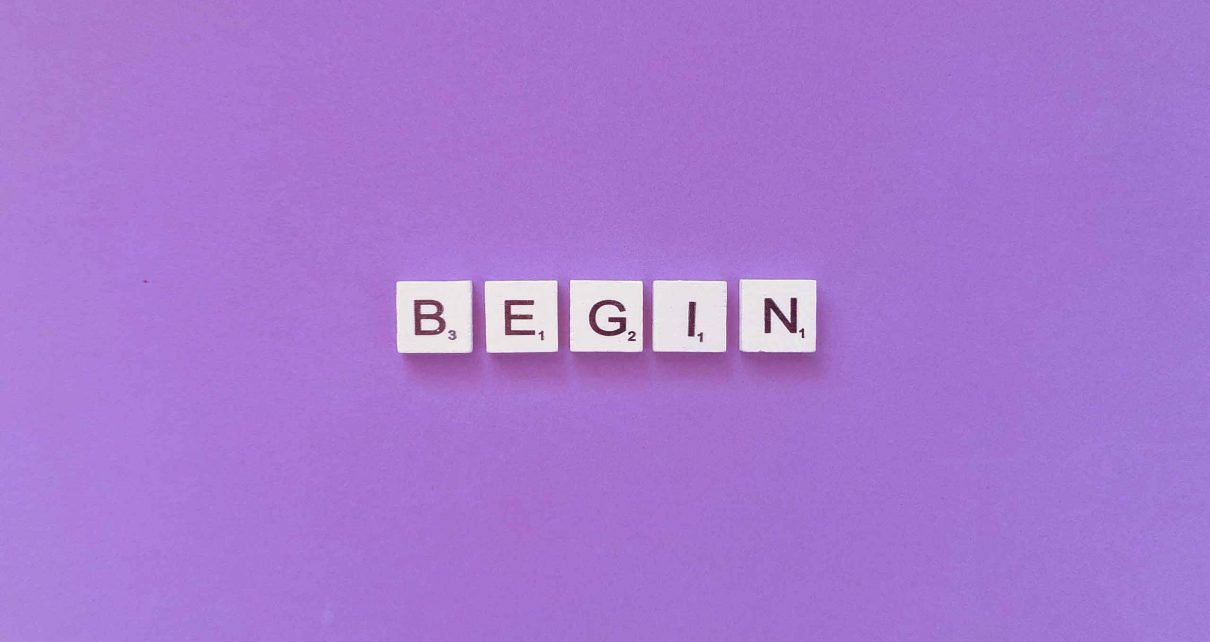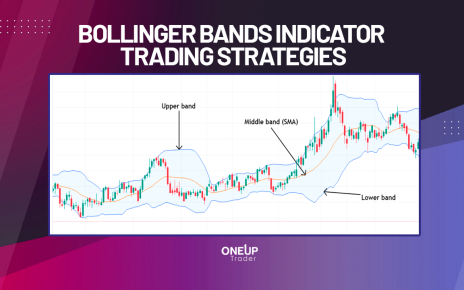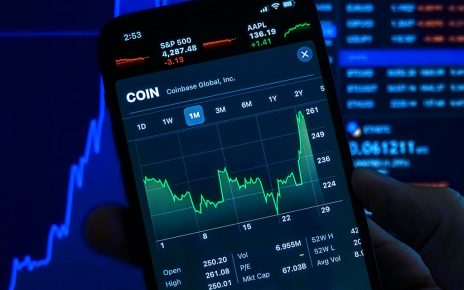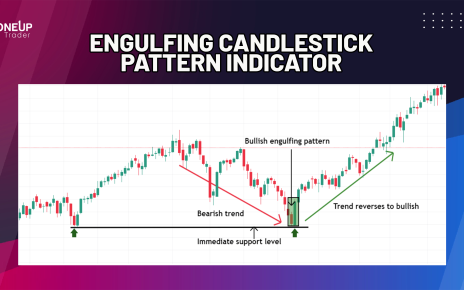Futures trading is a process to buy or sell futures trading instruments at an agreed price on an exchange. Futures contracts are an agreement where trades happen on an established exchange.
Futures trading is different from the traditional financial markets like forex, stocks, indices, or precious metal. Therefore, traders often confuse or scare about future trading.
However, future trading is fascinating for traders, and it might be a way to make extensive money from financial trading.
If you want to extend your trading portfolio, you can choose a futures trading instrument on your watchlist.
If you are enthusiastic about your trading career, keep the seatbelt on as you will see everything you should know about futures trading in the following section!
Are you ready?
What is futures trading?
Futures trading is a process to trade futures contracts just like the traditional spot market.
The futures contract is an agreement between traders to buy or sell a specific good with specific quality and quantity within a particular date.
The main aim of the futures contract is to eliminate market volatility when the instrument launches. Before that, suppliers and producers negotiate contracts with investors who agree to take both risk and reward from the price volatility.
For example, let’s say an airline company wants to eliminate the market risk by buying futures contracts of Fuel at $3 per gallon for delivery on a particular date.
When the date arrives, the airline company receives the Fuel at a previously set price. In that case, the airline company doesn’t have to worry about the current spot price of the Fuel.
A futures contract is very common in the investment world. Its trading instrument includes future contracts of forex, stocks, commodities, ETFs, etc.
How to start futures trading
Trading on a futures contract is straightforward. You have to open an account in a broker that supports futures contracts. Moreover, you can get funds from fully funded traders programs, like the OneUp Trader program.
The broker may ask you to provide your knowledge and experience in trading to determine how much money you could risk. On the other hand, you have to prove yourself as a profitable trader to get funds from the OneUp Trader program.
However, there is no standard regarding the commission or other trading costs in futures trading. Every broker or funded traders program has a different structure for costs. Moreover, you can get free research and analysis on future contracts with quotes and charts.
On the other hand, OneUp Trader offers to trade with virtual money during the 1 step evaluation that helps beginner traders to prove the capability.
It is wise to understand the trading process with virtual money before moving with the real dollar. Moreover, if you are experienced in future trading, the funded trader program might be suitable. On the other hand, you can stick to any retail brokers with virtual dollars.
Overall, the availability of trading instruments, leverage, margin, etc., depends on the institution’s regulation and quality of services.
Technical analysis in futures trading
Technical analysis is a process to anticipate an assets price based on the past price movement.
The best part of the technical analysis is that it does require any specific qualifications. Therefore, you don’t have to be a finance graduate or economist to understand the technical analysis.
This trading method is widely used in the financial market, including forex, stocks, cryptos, and futures.
The major technical analysis parts are support resistance, trendlines, Fibonacci, indicators, and price patterns.
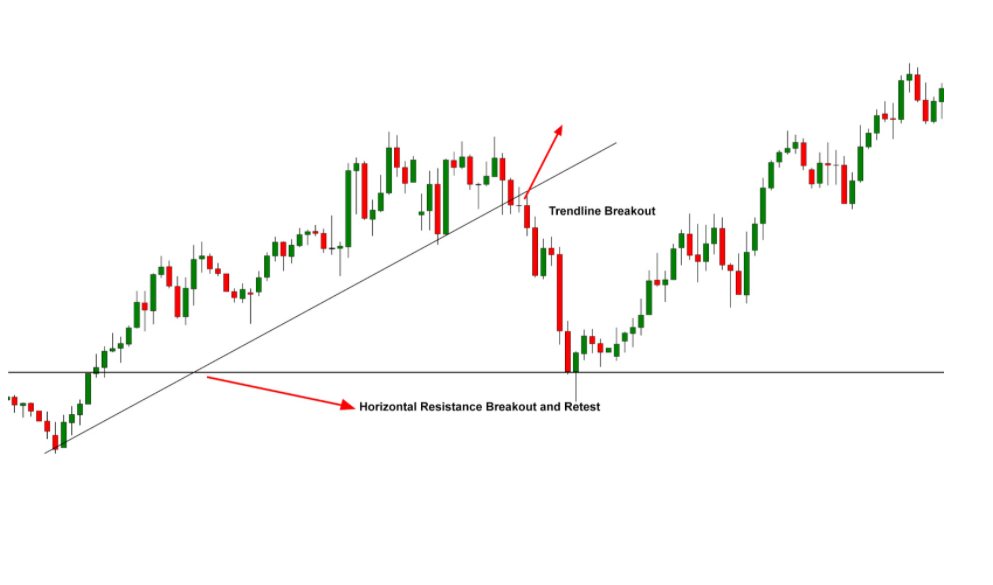
We can see how the price moves down from a resistance level and how the price reacted from trendline resistance in the above image.
Overall, with the candlestick and trading indicators, traders can anticipate a futures contract’s price direction and make money.
Fundamental analysis in futures trading
Fundamental analysis is a process to anticipate a trading asset’s price movement based on economic releases and events.
The leading four fundamental indicators are-
- Interest Rate
- Gross Domestic Product (GDP)
- Employment Change
- Inflation
The interest rate indicates how much money you have to pay the central bank to take a loan. An increase in interest rate will discourage people from taking loans from the bank, directly affecting the futures markets.
Similarly, any increase in GDP and employment is good for the economy, where an increase in inflation means decreasing the buying power of money.
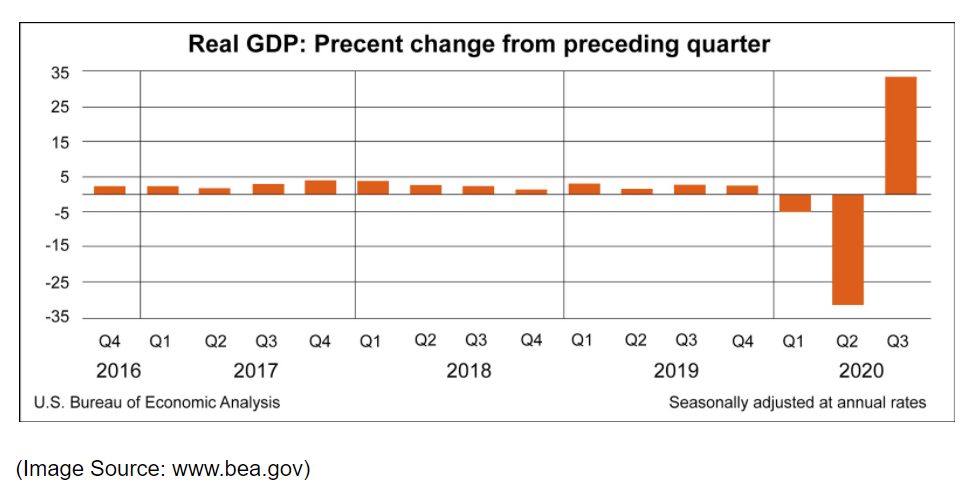
The above image shows US GDP Growth from 2016 to 2020.
Overall, in fundamental analysis, you have to anticipate the price based on economic releases. This method is slightly different from technical analysis, and it requires knowledge of economics.
Futures trading Vs. Spot trading
Futures trading is a process to buy or sell trading instruments at an agreed price on an exchange. On the other hand, Spot trading means buying or selling a physical trading instrument.
The key difference between futures trading and spot trading is that a physical transfer of instruments happens in Spot trading. However, in futures trading, the price is set, but instruments’ physical transfer occurs on the delivery date.
Therefore, the settlement time for futures trading is a specific date in the future. On the other hand, in spot trading, the maximum time for allowable settlement is two days.
The most suitable trading instruments for futures tradings are commodities that operate on a seasonal cycle.
However, in the present world, the futures contracts expanded to interest rate derivatives, treasuries, currencies, and cryptos.
Top 3 futures trading strategies
In the Beginner Guide to Futures Trading Strategies, we will see the top 3 futures trading strategies that are very effective and easy to implement in the market.
1. The Pullback strategy
The pullback strategy is based on an impulsive movement in the price chart and pullback. The pullback happens in the trending environment when the price moves above or below any important Support or Resistance levels and retest it.
This strategy has both a bullish and bearish scenario. We should wait for the price to break any important resistance level with massive power in an uptrend. The strength in the breakout represents how strong the momentum is. Later on, we will wait for the retest with a corrective speed, and when the retest is complete, we will enter the trade.
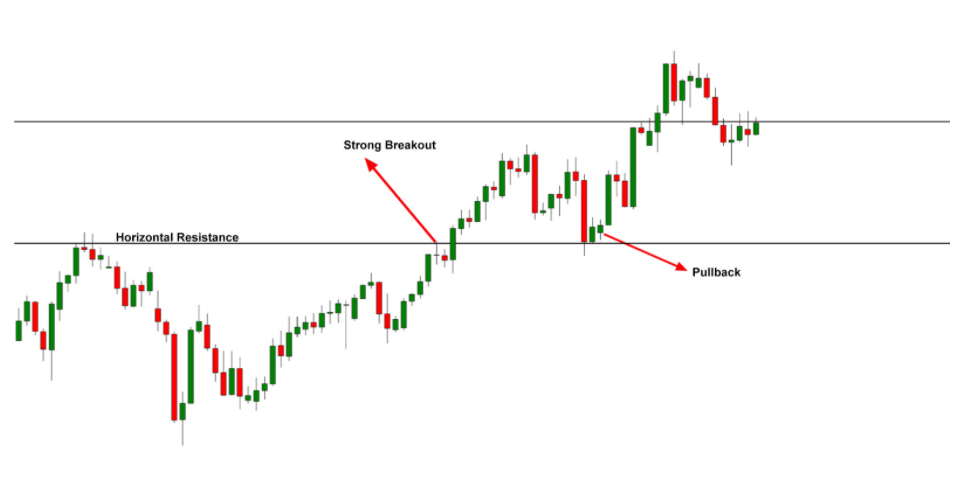
Similarly, in a downtrend, the price should forcefully break any important support level and retest it. After that, wait for the correction to complete and enter the trade towards the downside.
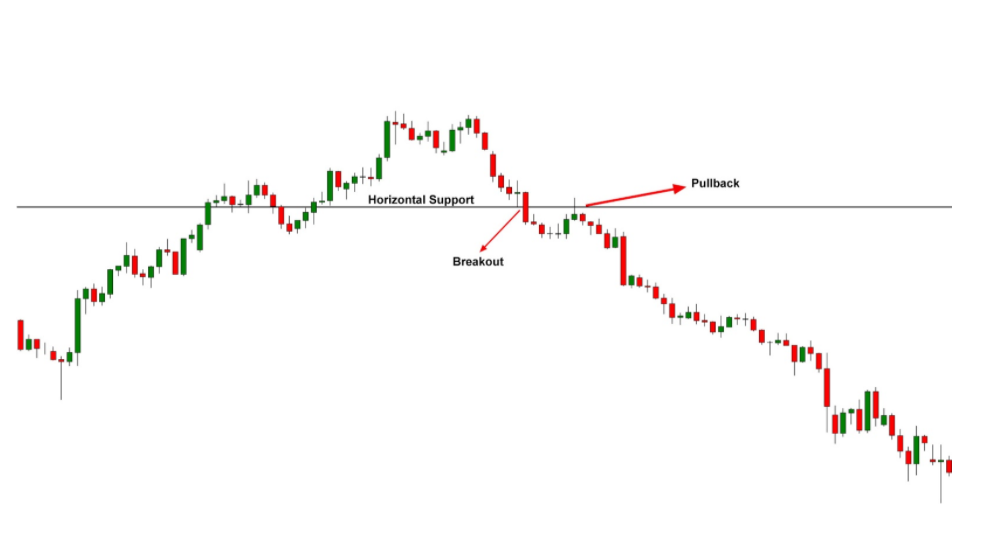
Besides the visual presentation of pullback, it indicates investors’ sentiment in the market. After a breakout, pullback happens when investors start to take profits. Therefore, when the profit taking is done, they will join the market again, and we are interested in that portion in this system.
However, there is no guarantee that the price will follow our direction every time like other trading strategies. Therefore, in the guide to futures trading, we should use the stop loss below the resistance and above the support to manage the trade.
2. Trading The Range
Trading the range means taking the trade from an important support and resistance level after bouncing off.
The support and resistance levels are the memory of human brains active in the financial market. When a similar situation happens, people usually react as they reacted earlier. If the price moves down from an important resistance level, it indicates a strong barrier. Therefore, when the price moves to that level, it has a higher probability of honoring the level and coming down.
Similarly, when the price fails to move below the important support level, we can consider the level as strong, and we can open buy trades from that level.
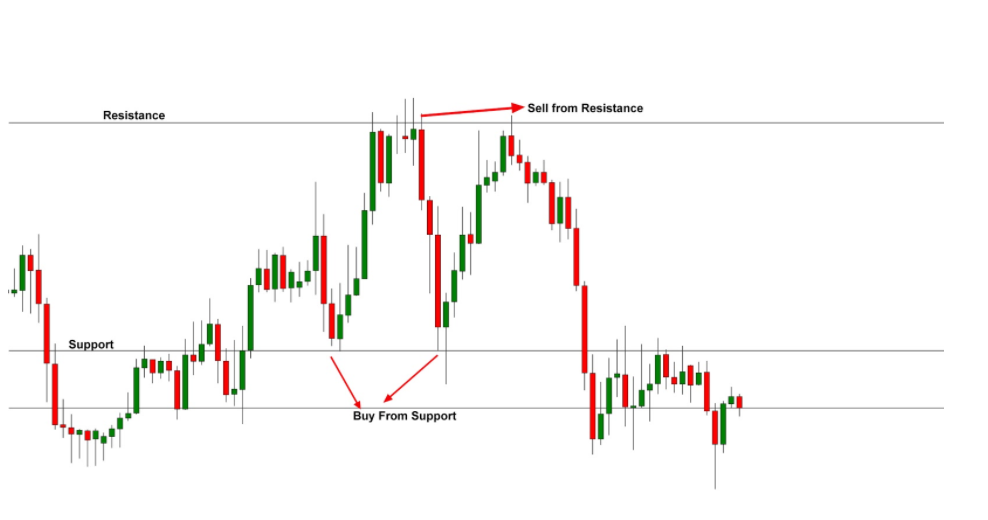
The range trading works well in the volatile market where the price barely makes any impulsive bullish or bearish movement.
3. Fundamental trading
The price movements in futures markets happen due to the changes in the fundamentals of the underlying asset. Fundamental is the main reason to take the price above or below important support/ resistance levels.
Professional future traders keep up to date information about the trading instruments in the futures market. Therefore, they can anticipate the price based on the changes in the fundamental releases.
However, the main drawback of fundamental trading is that it can provide the price direction only. Therefore, you cannot get any price level entering the. As a result, you should focus on taking trades based on a simple technical analysis strategy and identify the price direction from the fundamental analysis.
Among other fundamental strategies, trading decisions with the micro fundamental releases are most effective.
If you are trading futures currency pairs, you should focus on interest rates, inflations, and employment reports for the particular country.
Central banks follow these reports to take the monetary policy decision. When economic growth slows down with higher inflation and low unemployment, central banks cut rates to stabilize the economy.
Conversely, when economic growth is high with lower inflation and better than the expected labor market, central banks raise interest rates to balance the economic condition.
Therefore, by following these three economic releases, you can anticipate central banks’ projection over the economy.
Overall, in the guide to futures trading, you have to find the direction from fundamentals and use technical analysis to enter the trade and find appropriate exit points.
Futures trading as a career
Retail traders often find trading difficult to take it as a career. One of the biggest reasons is that retail traders don’t have the opportunity to manage a standard investment for trading.
The global financial market is huge, and if we include the leverage, we may face many risks in trading.
Therefore, investors should follow an appropriate trading strategy that suits their personality. Later on, after doing a lot of practice, investors should start full time trading with a moderate amount of deposit.
What is the best way to get the deposit?
OneUp Trader is the only fully funded trader program with risk-free access to capital. OneUp trader focuses on growing traders by promoting independent decision making.
You can avail risk-free trading opportunities with the OneUp Trader program by completing only 1 evaluation step. During the evaluation period, you have to trade a minimum of 15 total trading days in permitted CME products. There is an affordable daily loss limit and profit target to trade like a consistent profitable trader.
After completing just 1 evaluation step, you can trade with $25,000 to $250,000 funded accounts.
Overall, if you are a profitable trader, Join the OneUp Trader program and enjoy financial freedom by taking futures trading as a career.
Summary
Let’s have a look at key takeaways from the Beginner’s Guide to Futures Trading Strategies:
- Futures trading is a process to buy or sell trading instruments at an agreed price on an exchange.
- Futures contracts are an agreement where trades happen on an established exchange.
- Before moving to the trade, you have to identify a broker that allows trading in futures contracts.
- Technical and fundamental analysis is the most effective way to analyze the market and anticipate the price movement.


